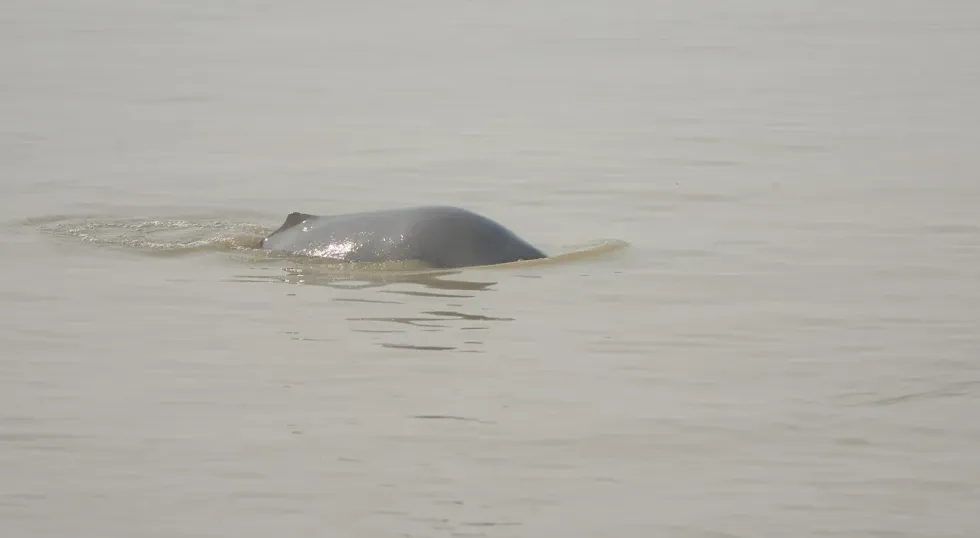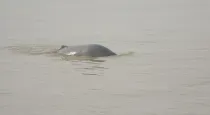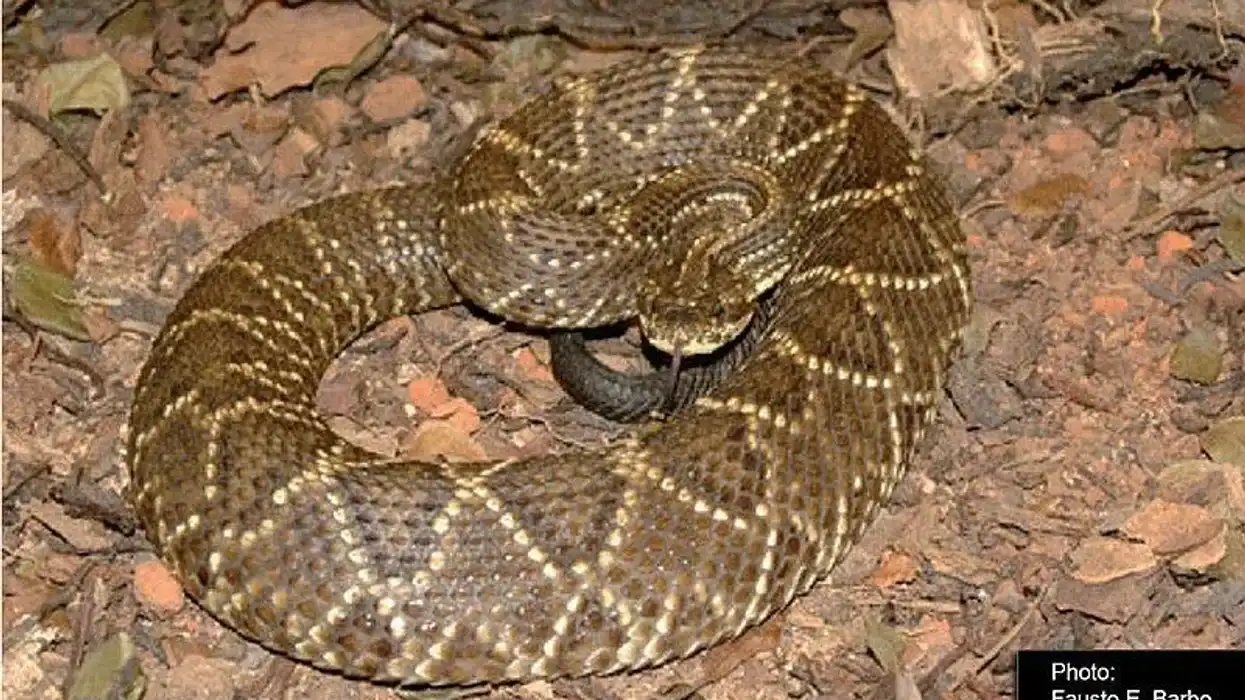The Platanista minor is one of the eight freshwater dolphin species found in the world. They are known as 'bhulan' in Urdu and Sindhi languages.
They are closely related to the Ganges dolphin, also known as 'susu'. They cannot survive in saltwater like their marine counterparts. The Indus dolphin and the Ganges river dolphin are the two subspecies of the South Asian river dolphins.
Though the population of these mammals once thrived well, with industrial development and modernization their existence has been threatened. Diversion dams called barrages have been built throughout Pakistan. The building of dams and barrages, irrigation canals across rivers has proved to be detrimental.
The habitat of this population got extensively fragmented. This had a profound impact on the survival, communication, foraging, breeding, and migration of the population.
Like reading about this interesting mammal? Let's continue!
If you like what you read, you may also like reading about the common dolphin and the leopard seal.
Indus River Dolphin Interesting Facts
What type of animal is an Indus River Dolphin?
An Indus River dolphin is a dolphin belonging to phylum Chordata, subphylum Vertebrata, order Cetacea, and species Gangetica minor.
What class of animal does an Indus River Dolphin belong to?
An Indus River dolphin belongs to the class Mammalia.
How many Indus River Dolphins are there in the world?
There are an estimated 1800-1900 Indus River dolphins in the world. There has been an increase in the number of these dolphins in the past years.
Where does an Indus River Dolphin live?
An Indus River dolphin is found in a river. It is found in the benthic aquatic biome and is a freshwater river dolphin.
What is an Indus River Dolphin's habitat?
The Platanista gangetica minor is found in South Asia. The Indus river dolphin's habitat is mainly in the Indus River in Pakistan. They are mainly concentrated in the South Central part of Pakistan. A few of them are also found in India in the Beas, a tributary of the Indus river.
Who do Indus River Dolphins live with?
The Indus river dolphin may live alone or in pairs. Sometimes, the Platanista minor is also seen in groups of up to 10 individuals.
How long does an Indus River Dolphin live?
The Indus river dolphin lives for up to 30 years.
How do they reproduce?
They breed throughout the year. Their gestation period is around 10 months. Females give birth to one calf. They reach sexual maturity when they are about six years old. Sexual maturity occurs at almost the same age for males and females. The calves are nursed for about one year.
What is their conservation status?
According to the IUCN Red List, they are an Endangered species. Clearly, its conservation is crucial. The species is protected throughout its habitat under CITES Appendix II.
Indus River Dolphin Fun Facts
What do Indus River Dolphins look like?

Dolphins have a grayish rounded body with a small triangular fin at the back. They have a melon-shaped forehead. This is their round forehead that collects sounds from the surrounding environment. Their belly is pale white and they have a long snout and visible teeth.
Their beak forms about 20% of the entire body's length. Their eyes are very small and they have external ears. Their neck is very flexible.
How cute are they?
Indus river dolphins are very cute animals!
How do they communicate?
Indus river dolphins produce a sound almost constantly. They use it to navigate, communicate, and forage. When they appear on the surface to breathe, they produce a sneeze-like sound. The communication channel of the animal is mainly acoustic.
How big is an Indus River Dolphin?
River dolphins are 7-8.5 ft (2-2.5 m) in length. Females are larger than males.
How fast can an Indus River Dolphin swim?
These dolphins swim on their sides. This feature helps them to navigate in shallow waters. They are fast swimmers.
How much does an Indus River Dolphin weigh?
River dolphins weigh around 155-245 lb (70.3-111.1 kg).
What are their male and female names of the species?
There are no separate names for males or females.
What would you call a baby Indus River Dolphin?
A baby Indus river dolphin is called a calf.
What do they eat?
The blind river dolphin feeds on prawns, carp, catfish, mollusks, and other small fish.
Are they poisonous?
The short answer is no, however, as dolphins are at the top of the food chain, they may consume fish and accumulate toxic materials in their body. If consumed, this meat may prove to be poisonous.
This problem is a quintessential example of bio-accumulation and has been the result of the decline of the dolphin population in the past few years.
Would they make a good pet?
They have an Endangered status and are found in captivity. They won't be suitable as pets.
Did you know...
The Indus river dolphin, Platanista gangetica minor, is found in Punjab, India. They are slightly different from the Ganges River dolphin. The tail lengths vary between these two subspecies. However, it is the geographical location that helps to differentiate them.
They are less athletic than other dolphins.
The existence of the dolphin is an indicator of the overall health of the river. If they are thriving well, it indicates that the river water is healthy. This is why these dolphins are so important.
The accidental capture of a dolphin is also known as bycatch.
Dolphins are hunted for their meat and oil. The oil is used for medicinal purposes.
The internal sonar system of the dolphin is so strong that it can differentiate between a dead and living fish.
People consider the Indus dolphin as a part of their Harrapan heritage. Just like this animal, the gharial was also found in the Indus river. However, it is now locally extinct.
Are Indus River Dolphins blind?
Yes, this subspecies is blind and depends on echolocation to navigate.
Why is the Indus River Dolphin endangered?
The Indus river dolphin is thriving better in Pakistan than it is in India. The Ganges river is the lifeline of the people in Northern India.
Similarly, the Indus is crucial for the survival of people in Pakistan and India. Life is difficult for the dolphin as humans dominate almost the entire length of these rivers.
Humans perceive them as threats as they both hunt for fish. Fishing is very common in these rivers.
Sometimes, the species gets caught in fishing nets and fishing gears. Links have been found between over-fishing and this species becoming endangered.
Sometimes they get hit by vessels because of this. Pollution along the length of the river is another factor that contributes heavily.
They are affected by underwater noise pollution. Chemical pollution of water bodies is a cause of concern.
Chemicals often overrun from adjoining irrigation and crop fields into the water bodies. Links have also been found between industrial pollution and the species going endangered.
The World Wildlife Fund (WWF) is doing considerable work in protecting this endangered species along with the national, state, and local governments. Local communities are being educated and they are helping in the conservation of this endangered species.
Pingers are used to keep the dolphins out of fishing nets, these make a noise that is inaudible to humans, however, the dolphins being susceptible to a high range of sound frequencies can hear the sound and avoid the pingers.
The Sindh Wildlife Department has started a hotline for the local people and told them to inform in case dolphins get caught in ponds or canals.
However, even when they are rescued, the survival rate of the rescued animal back in the river is a matter of concern. Also, these animals tend to get very tense when they come in close contact with humans and it affects their blood pressure levels.
Here at Kidadl, we have carefully created lots of interesting family-friendly animal facts for everyone to discover! Learn more about some other mammals including walrus facts and vaquita facts.
You can even occupy yourself at home by coloring in one of our free printable Indus river dolphin coloring pages.










